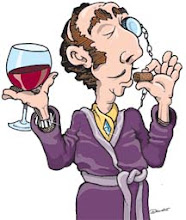Here is an excellent blog about wine clubs by the Wine Curmudgeon:
Wine clubs and what their success says about the wine business
I have plenty of opinions about this and could drone on about it for quite awhile, but my main thoughts are below...
Third party wine sales are coming under attack and the space is evolving rapidly. Zagats, NYTimes and others are having their business models analyzed by State Liquor Authorities as they do not hold Retail licenses, yet they take money in. California has or is ruling on what they call third-party marketing, New York is trying to update their liquor codes as I write this, and Groupon has had to move away from offering wine discounts (they are deemed too close to the transaction).
There are many serious complexities and inconsistencies in wine sales and distribution laws and codes and plenty of 'scofflaws' out there ignoring those laws. I find it interesting that NJ is one of the states that doesn't allow direct to consumer sales from wineries, yet some of the internets largest wine sales come from that state!?!?
Interesting times right now, there will continue to be many fits and starts in this battle but eventually the consumer and producer will get their share of power in this equation...Right now the battle is being waged in back rooms with lawyers and executives of giant corps (Diageo, Southern, Heineken...) and State Authorities.

